Having spent the last 3 chapters covering multi-species grazing and silvopasture systems, we now have an understanding of tree utilization within a grazing setting. It’s important to then start thinking about the trees for these systems themselves, and two particular methodologies around producing from our trees, and those two methods are coppicing and pollarding.
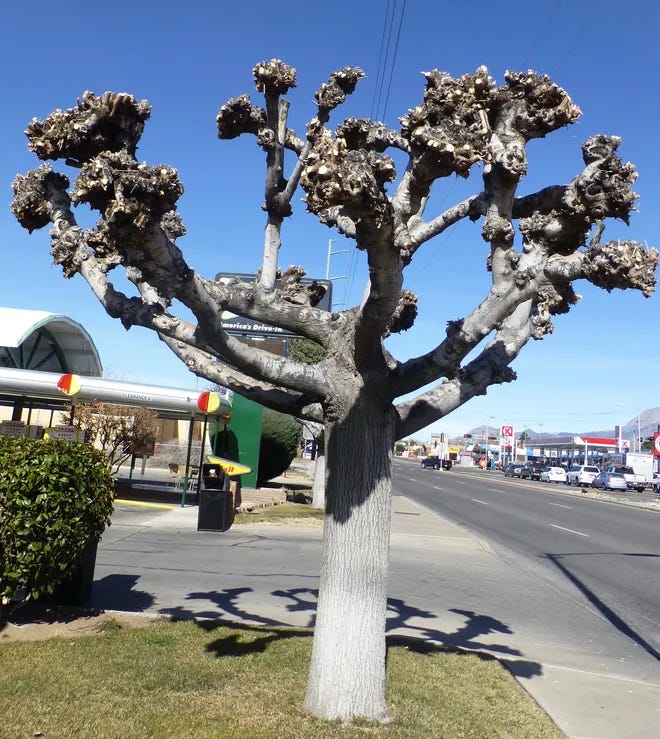

In effect, these are the same practices done at different heights. The general idea is that you cut the tree during dormancy at a specified height; either at the roots if you're coppicing or at a designated height; usually above browsing height— around 6 or so feet— if you're pollarding. That’s the short answer. The long answer is so ingrained in human history and what it means to be connected with the landscape, that it fills books.
Coppicing & pollarding are one of the most ancient forms of horticulture that we have. We pollarded trees to store “tree hay” before the scythe was invented. Managing the forest landscape with tools like the ones we’ve explored in our content on Norway or with fire as was done through much of North America, coppicing and pollarding trees is a universal language of humanity.
The biggest benefit of both practices is that it allows us to reuse the root systems of the tree while also getting the benefits of cutting down the tree, so the tree returns quickly to life the following year. Different species offer different benefits, and every tree has a long list of utilities. Willows, for example, are not only incredibly fast coppicing trees, but they make great starter kindling, incredible feed for animals, slender willow whips called withies that are incredibly flexible and have been traditionally used similarly to rope for tying thatched roofs, and of course, wicker baskets and furniture all come from willows. A stump can send up a dozen shoots that are 6 inches in diameter in a few short years, while a seedling may take up to 20 years to produce as much mass. Through coppicing and pollarding, the landscape is able to provide us with sustainable ways to stay warm, eat, forage, and be interactive and thoughtful in our decisions with the landscape.
Let’s think about how we currently manage lands and some of the challenges that come with it. You have a garden. You plant your annuals, which are intensive feeders, and then the soil needs to rest after a year, maybe two. Even with good cover cropping, it might take a couple of years to return the nutrients to the soil in order to feed those needy fruiting annuals. What if, for example, those annuals grew with pollards in place? The trees are cut down as a pollard the first year of the annual garden and are thinned for tree hay consistently, allowing good sunlight access to the soil. The second year, the same thing; the only thing left is the main shoots and the tops. By the third year, the pollards are left to their own and the soil is covered in cover crops until the cycle repeats a few years later.
This is just one way that we can think about integrating the cycles of the landscape into our food systems. With coppicing, we can create a timed system of agriculture that gives lumber, grain, and vegetables and renews the forest. Through the use of pollards and coppice, the Iberians had wood, charcoal, vines, cork, ink, sweeteners, and fat pork.1 The people of Japan had an integral system of living that brought them rice, wood, pottery, poetry, and fire.2 The people of Sweden and Norway for thousands of years had grown fodder for their sheep, goats, and cattle and wood for their stoves.3 By fire-adapted species, the indigenous people of North and South America had cleared land for growing and in return got poles to make houses, fashioned traps, and stimulated the production of fruit and nuts.4 California tribes harvested stems to make baskets to hold food and supplies, to sift, and to cook a meal. Through fire-adapted species, the people of the Amazon basin had created shifting agriculture that enriched the rainforest soils.
So, if coppicing is so good, why was it abandoned? Well, I’m sure you’re familiar with the since-debunked the tragedy of the commons, and this was part of the active campaign which worked to suggest the commons had been destroyed by the commoners. The real story of the tragedy of the commons has made its way across the internet in meme and podcast form, so go do a quick google search on it if you’re not familiar with how the landowner class turned the commoner against their own interests. The often pollarded trees of the commons around villages were thought hideous disfigurements, signs of the backwardness of the typical uneducated rural folk.
In this new post-enclosure landscape, man became a viewer of an idea of nature that he himself had made in the image of an understanding of history that likely never existed. If you traveled back to the end of the last Ice Age, for example, it is very likely that woodlands browsed by large herbivores like mammoths, and mastodons much more closely resembled pollard woods than did our notion of a pristine, old-growth forest.
In a review of the literature on sprouting among leafy trees, Arnold Arboretum botanist Peter del Tredici estimated that 80 percent of trees in a broadleaf forest are not seedlings but sprouts from a preexisting stem.5 So, you might be wondering, why does this resprouting to some trees, and not to others?
There are trees that possess what’s called a lignotuber, a specialized organ at the base that maintains viable dormant buds for the entire lifetime of the tree. When you find a multistem oak in the forests in most parts of North America, it is very likely the result of many stems that sprouted from the lignotuber when the previous tree died. It is a non-human initiated coppicing. The flare at the base of each tree is a colony of buds, ready to recruit new stems.
Now, while branching in itself isn’t an innovation, not something trees learned to do because of an Ice Age or some other recent event. It is rather a way of life that they have gradually perfected over 400 million years.
Every plant plays upon six choices:
The First—To branch or not to branch. Palms, for example, never branch, though some clustering palms make the second choice, below.
The Second—If you branch, do you do so only at the bottom, or all along a stem? Bamboo, for example, is simply a colony of stems, each repeating from the base, and the small grove is in fact a single plant.
The Third—Do your trunk and branches grow without a rest, or is there a dormant season? Trees with a definite dormant season—like spruce and fir—tend to have a very clean and open habit of growth.
The Fourth—Do all of your branches want to grow upward, all outward, or do some want to grow upward and others outward? Many dogwoods prefer to grow mainly outward. Staghorn sumac wants to grow mainly upward.
The Fifth—Do you flower at the branch tips, or on smaller lateral branches? Again, sumac flowers at the terminals, so each year’s new growth must start from dormant laterals below the tips.
The Sixth—Do your branches change back and forth between growing outward and growing upward? This is a flexible arrangement that lets a plant fill the space above and around it.
If every tree seeks to express its model, why then do plants all appear so unique? Because nothing is ever what it seems. But to understand the growth habits of trees, we need to back up. The first third of the tree’s life is positive morphogenesis. “Building up” is what it means. The phase may last one hundred years— it depends on the tree species. Then, for another century or two, or for younger species a decade or two, the tree may maintain its full stature, no longer able to grow much taller or wider, but still replacing every lost piece with new sprouts. Finally, it enters the third stage of its life, negative morphogenesis, or “growing down.”
Growing down is not just decay. It is as active and improvisational as the building up phase. Roots are damaged or die. Branches are lost to storms. Hollows open up on the trunk and are colonized by fungi. It becomes obvious that scaffold branches were once separate trees, as they become so again, some maintaining their root systems and others losing them. The tips of the higher branches begin to die back. Instead of growing new branchlets on their undersides, they now sprout perfect little trees of their species on the tops of the branches, between the trunk and the dead tips.
So, why are we talking about all of this? Well, because it all helps to explain so much of coppicing.
A coppice is not simply one tree, but a synthetic ecosystem in which human participation is the key. Far more species of plants, insects, birds, and other creatures inhabit such a mixed landscape than would live in an untouched woodland.6,7 And the fact that it is cut in a rhythmic cycle keeps a living seed bank in the dirt and allows for a tremendous variety of animal life that can safely live there as long as it pleases. A coppice is a multigenerational homage to both the past and the future.
To keep a coppice woodland is an art. The woodsman has to manage not just the trees, but also flowers, berries, shrubs, birds, dormice, butterflies, deer, and visitors. The cutting comes first. Different trees like different ways. For hazel or alder, cut as close to the dirt as you could get. For older stools of ash or willow, maple, birch, linden, sycamore, or elm, a forester might typically cut at an angle six inches or more above the ground. Some of the trunks cut can be as thick as telephone poles, others the width of a human arm, others slender and whippy like beanpoles, according to the species of the tree, the sun access where it had grown, and to the purpose for which it was kept. The skill of the woodsman is to know the trees and how each will likely to respond to a different kind of cut. The dirt, the species, the sun, and the water might all play a role. You have to respond to the whole landscape.
In the first three years following the cut, the sunlit ground will bloom. By the fourth year after the cut, the young poles of the resprouting coppice began to meaningfully shadow the ground, changing the plant composition. The meadowy landscape becomes a thicket. All the other flowers retreat to the edges or drop down their seed to wait for a future when the coppices are gone.
By about the seventh year after the cut, the spreading tops of the coppice trees first close the canopy. Under this canopy, the ground opens again and again the composition shifts.
While this is the most common method of cutting coppices, it isn’t the only one. Another common practice was called coppicing with standards. The general idea of this was to coppice a tree except for 1 shoot, allowing that shoot to get to, ready for it, standard size. These larger poles were often utilized for specific things, primarily lumber that needed to be straight. And, of course, in a field like this, the tree will get significant headway above the others who chase the sun below it.
Places like Norway used livestock to continue resetting the succession of the forest floor, keeping grasses growing and reducing the brambles in order to feed their livestock, but this wasn’t always the case, as explained above. The coppicing cycle offers a glimpse into the framework of how a landscape can be managed intensively with a multitude of different changes that tackle the unique conditions of place and time and gives us an idea of what sustainable agroecology can look like.
Each coppice cant (section of forest that is coppiced at a time) is a woodland history in miniature, repeated again and again as the cycle of cutting comes around. If there are fifteen cants in a given woodland, though, it is only one scene in the performance of the entire forest. The art was to mix all of the stages in a way that could help the whole ecosystem shine. The annual rhythm of cutting might move around clockwise, for example, from one cant to the next in space. This brings better light to the young areas and helps the animals that prefer a given stage to stay with it. Further, the scrubby tops of the new-cut coppice make effective fencing to keep animals out of the slightly older meadowy cants. The tops of next year’s cut might reinforce last year’s fences, as well as make its own, and so on around the whole coppice.
In Norway, the rest of Scandinavia, and the whole northern world, broadleaf trees were pollarded and coppiced on a short cycle of four to six years. Alder, willow, and sometimes rowan were coppiced, cut straight to the ground. The rest of the trees were pollarded, starting with a heading cut at six to eight feet, meaning the main trunk was cut back to a knuckle, the spot where it had been repeatedly cut in the past or where it will be repeatedly cut in the future, and then the tree was trained to grow outward with scaffold stems, that is, the stems that are the largest and shape the tree, that could be cut back in rotation perennially.
The stems were allowed to get almost as big around as a man’s arm, which kept a high ratio of leaves to wood. On a longer rotation, you get more wood, fewer leaves. Some of the farmers cut the branches in late summer, while the leaves were green and still nutritious. Others lopped the smaller, leaf-bearing stems off the big ones. They gathered, bundled, and tied them with rowan or birch twigs, and dried the bunches on poles, trees, or racks. On some farms, they built the bunches into rain-shedding concentric stacks of two or three hundred bundles.
Today, most folks use a chainsaw or a bow saw, but for thousands of years, the main tool was the leaf knife. Even before metal tools, a sharp-edged stone hand blade could be used for the same purpose. For this reason, it was possible to feed leaf hay to the animals in winter hundreds of years before it was possible to use a metal scythe to cut grass hay. A good sharp leaf knife could get through an arm-sized stem in four good blows. This practice is by far the oldest method of agricultural manipulation and the one we carried with us across the world.
The cutting of the trees stimulated faster and thicker meadow growth. Typically, groups of trees were pollarded in succession, year by year, so there were five different states of regrowth. A novel ecosystem of invertebrates, fungi, lichens, and other creatures inhabited the trees as they regrew. Where trees had recently been cut, the pasture grasses grew thicker and quicker, not only because they got more light where the branches had been cut back but also because small dying tree roots—the roots retrenched when the trees were pruned—contributed organic matter to the soil.8 The grasses were grazed twice in the season, so they also received manure, as well as the feet of the animals, opening up the sod. Early grazing kept down the most aggressive grass species.
A coppice woodland is divided into sections by a system of ditches and banks: The earth dug out to a depth of three feet or more around the edge of each part is thrown up to make a tall bank on the inside. Each piece was called by many different names: coupe, sale, cant, fell, burrow, or hagg. These ditches were primarily tools to mark property lines but also offer a secondary benefit as a way to move water around a forest. This practice was more common in places like the United Kingdom, where water saturation can cause root rot and death because of the high amounts of precipitation. There may have been more uses for these ditches and banks, but that knowledge has been lost to history.
Which brings us to today. We’ve briefly touched on a few different species and their uses. Most trees offer edible forage for animals, which might come as a surprise, since not only is it rarely talked about, but many agricultural extension schools often list edible species as toxic. This speaks a bit to how lost of an art form tree hay is, and we’re going to dedicate a chapter to tree hay, so hang in tight. The important thing to remember is that most species are edible. Obviously, not all, but we’ll get to that.
What can we utilize today? Hazels, birches, willows, black locusts, honey locusts, mulberries, maples, and oaks are particularly promising for temperate North America because they have multiple uses.
While I frequently rave about locusts, both black and honey locusts coppice and pollard well, grow quickly, fix nitrogen into the soil- each in different ways- and both offer fantastic firewood and great feed for livestock. Honey locusts, in particular, are great for hedge-laying, which we will cover in a later episode, and are both trees I personally grow. It is worth noting that black locust can be invasive, depending on your local climate, largely due to their ability to quickly take over low-pH, sandy soils. Hazels obviously provide nuts but also have incredibly pliable poles that are great for various products, from fishing poles to fencing and basketry.
Willow, an absurdly fast-growing tree, offers some of the most delicious leaves I’ve fed my own sheep, and I find chickens even enjoy a nibble, while also growing in more wet conditions than many species will bear and is the original species’ wicker furniture was made from, reflecting its incredible ability to be manipulated and use for things from baskets to tables. Further, the extra logs that you don’t need to burn are ideal to be inoculated with Lions Mane and oyster mushrooms! Birches similarly grow incredibly quickly, while also having the added benefit of birch syrup, making it a particularly intriguing candidate for a coppicing with standards project, and also can host Lions Mane and shitake mushrooms on cut logs as well.
Mulberries are one of the most incredible, underutilized trees on the earth, with massive amounts of fruit production, incredible coppicing ability, dense, clean-burning firewood, and leaves packed with protein for your animals—or yourself even—and the wood will also host lions mane and oyster mushrooms.
Maples not only coppice well, but provide delicious syrup, as I’m sure you know, and are also a great candidate for coppicing with standards. While sugar maple firewood is alright, like willow it makes for good kindling and is a good wood for shoulder season—the spring and the fall—it really shines in the mushroom category, where it can host a bunch of different edible mushrooms, so if you’re a big mushroom person, it deserves a spot on your list.
The last of this list, which is not exhaustive by any means, is the ubiquitous oak. Slow-growing, oak has incredible firewood, good leaf hay, a staple crop of acorns that can be utilized and stored to last years, and is one of the most useful trees for mushroom production. Further, this is probably the species most likely already on your property.
There are so many more great trees for coppicing and pollarding, but hopefully, this will give you enough to chew on when thinking about the species you might be interested in. And as you can probably tell, there aren’t really too many wrong ways to coppice. The most important thing is to not cut your coppice stool in the fall. You can cut it in the summer if you’re harvesting hay, but just as it prepares to send the sugars back to the roots, it’s important to not zap the tree of that essential energy. If you’re looking to harvest logs, the winter is a perfect time to trim your coppice or pollard down. If you’re looking for tree hay, any time during the summer is good, and even in the spring, harvesting the branches as the buds begin to break is a good way to get even the most picky animal to enjoy tree hay. Shaping, annual cycles, and so on are depending on spacing, species, and your goals. The closer the coppice and pollard stools are to one another, the more straight the shoots will grow to compete with one another for sunlight access. Further, the closer they are, the quicker they’ll block out sunlight to the forest floor. Don’t overthink it; remember that one of your ancestors has more than likely spent their entire lives coppicing or pollarding trees; we’re only a few generations removed from this time-honored practice.
The most intimidating part is cutting the tree for the first time. You’ve spent the money usually to buy the species you want, then spent years growing it from a tiny whip, and now you’re gonna do what seems like the worst possible thing, cutting it up! Deep breaths. With a tree, it is more typical to leave a trunk supporting three or five branches – these branches are cut back to a desirable length and the twiggy growth appears at these ends. This allows the tree to quickly begin to photosynthesize and to quell your nerves that “something” resembling a tree continues to exist. Initially, the new branches are held weakly in place as they grow rapidly from underneath the bark, rather than from within the tree. As the wood lays down annual growth rings, the union strengthens, often forming a thickened base where the shoot meets the trunk. Over a number of years, a swollen 'pollard head' forms where new shoots grow each year. That said, I’ve seen oaks that I didn’t care about get lopped at 3 or 4 feet high in the middle of summer and now look as though the most experienced woodsman had managed it.
When it comes to coppicing, the recommendation is to only start coppicing during the winter after a tree is at least 5 years old. Cutting it as close to the ground as possible helps ensure a stable stool for the tree to send new shoots from, and ideally you’d like to stay away from coppicing significantly older trees. That doesn’t mean you can’t, it just means that the tree might struggle more to grow. That said, one of my own willows was around 30 years old when I gave it its first coppice, and the growth in a few years is surreal, with over a dozen 6-inch diameter poles shooting up from a very poorly cut stump.
The important thing to remember when it comes to cutting your coppice or pollard is to cut new growth. You shouldn’t be cutting into places you’ve cut before. The cut spots scab over and harden and new shoots arise from there. If we cut below this, we are reducing the points from which the tree can grow in the future. But, it isn’t the end of the world if you accidentally do, especially on a newer tree being brought into a cycle of cutting. The point is, don’t beat yourself up or set too high of expectations of what it should look like- people have been doing this since we had to use rocks to cut trees- cut yourself some slack. Trees are resilient. Be confident and consistent in your attempts, and your trees will thrive.
So at this point, you’ve got an idea of the history of coppicing and pollarding, some basic understanding of the biology behind the practice, and hopefully a few species in mind that this might be a good fit for within the context of what you’re trying to do, and a rough guide to what this practice should look like in a hands-on setting, and what you’ve gotta do to be successful in it.
If you’ve enjoyed this piece, which is equal to a 17 page chapter, of (so far) a 706 page book with 341 sources, you can support our work in a number of ways. The first is by sharing this article with folks you think would find it interesting. Second, you can listen to the audio version of this episode, #63, of the Poor Proles Almanac wherever you get your podcasts. If you’d like to financially support the project, and get exclusive access to our limited paywalled content, you can become a paid subscriber on Substack or Patreon, which will both give you access to the paywalled content and in the case of Patreon, early access to the audio episodes as well.
See; The Spanish Dehesa podcast episode.
See; The Japanese Satoyama podcast episode.
See; The Norwegian Farms podcast episode.
See; The Maya Milpa podcast episode.
Logan, W. B. (2020). Sprout lands: Tending the Endless Gift of trees. W.W. Norton & Company.
Chiatante, G., Marta Giordano, & Meriggi, A. (2019). Bird diversity in short rotation coppice in Northern Italy. Ardea, 107(1), 5. https://doi.org/10.5253/arde.v107i1.a10
Weiss, M., Kozel, P., Zapletal, M., Hauck, D., Prochazka, J., Benes, J., Cizek, L., & Sebek, P. (2021). The effect of coppicing on insect biodiversity. small-scale mosaics of successional stages drive community turnover. Forest Ecology and Management, 483, 118774. https://doi.org/10.1016/j.foreco.2020.118774
Luostarinen, K., & Kauppi, A. (2005). Effects of coppicing on the root and stump carbohydrate dynamics in Birches. New Forests, 29(3), 289–303. https://doi.org/10.1007/s11056-005-5653-3




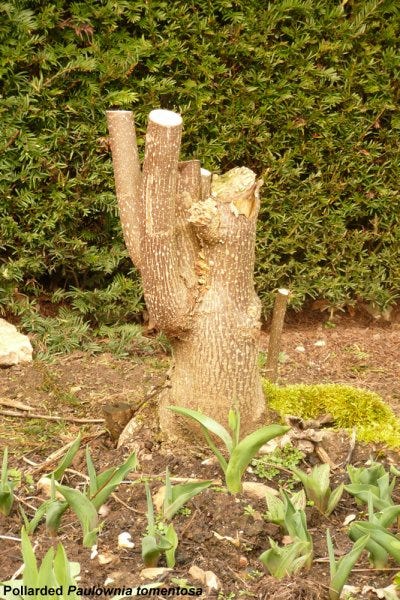
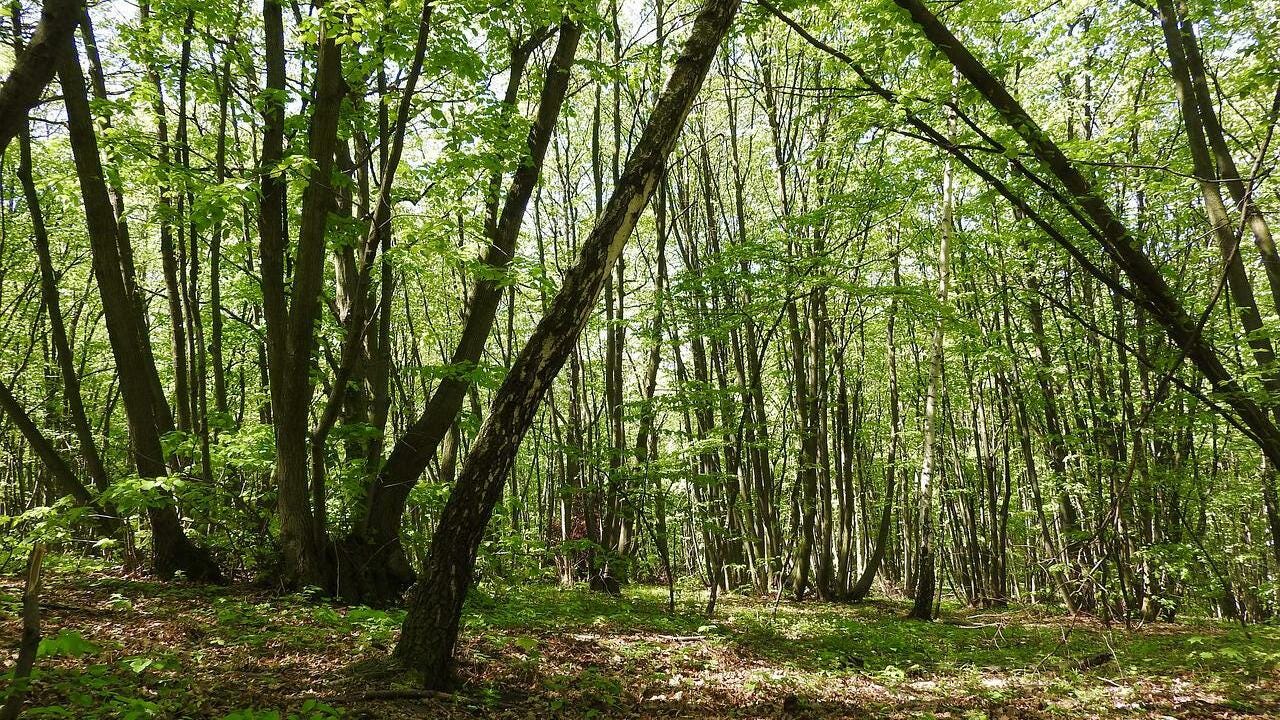
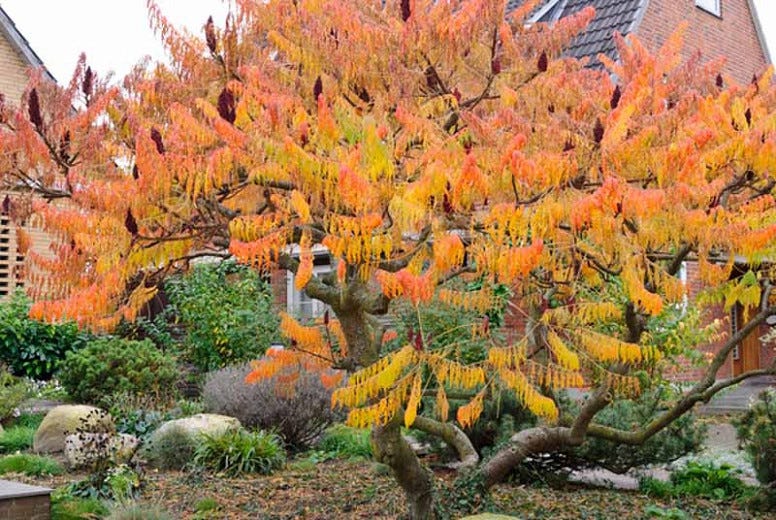
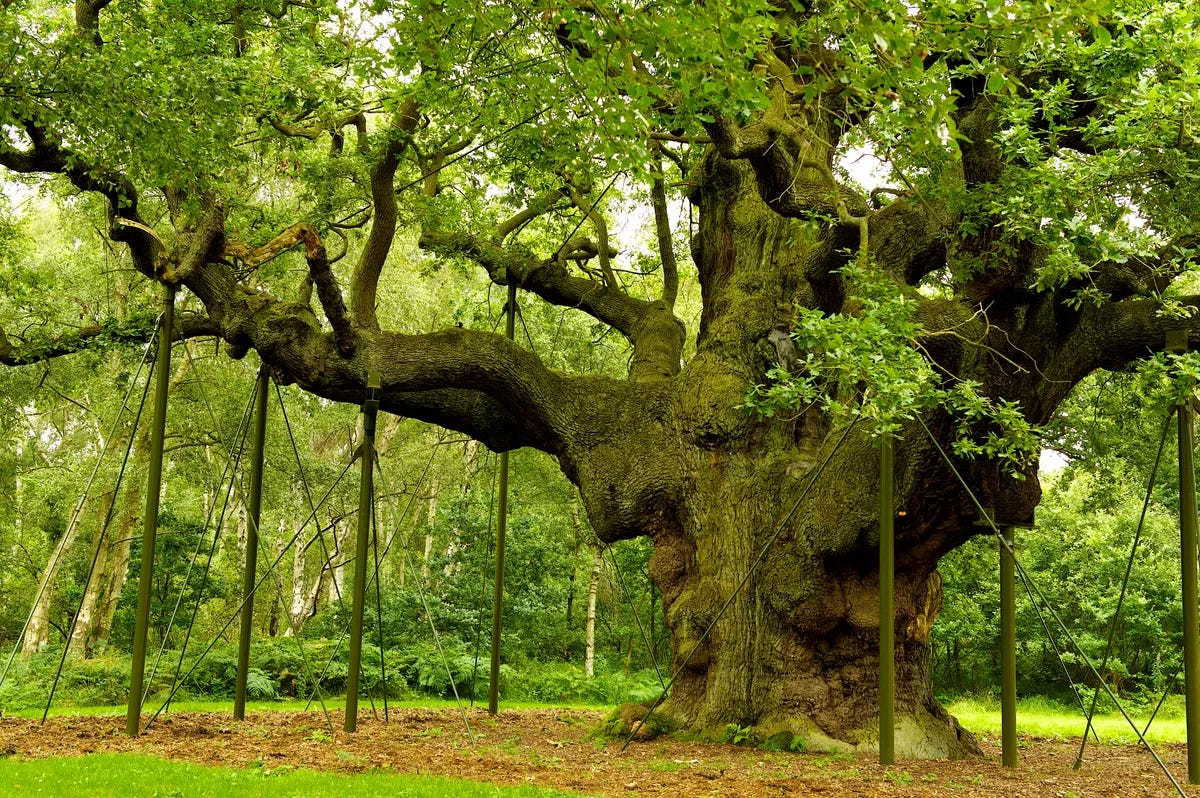
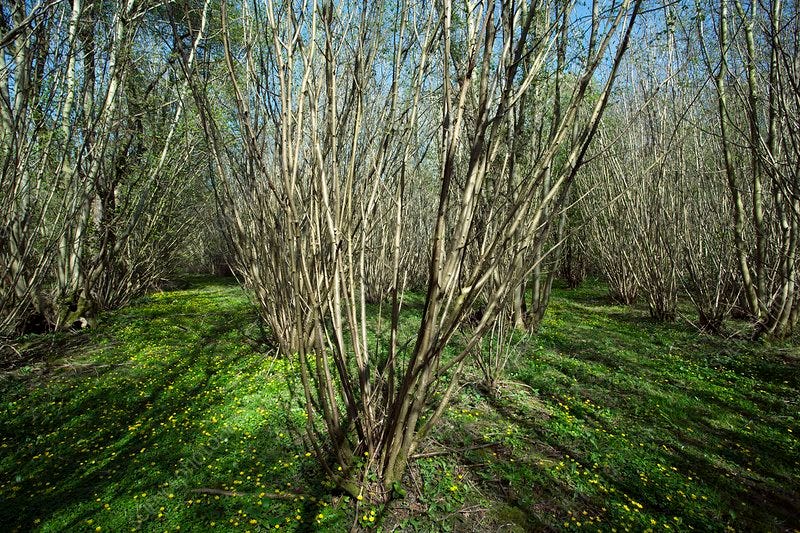
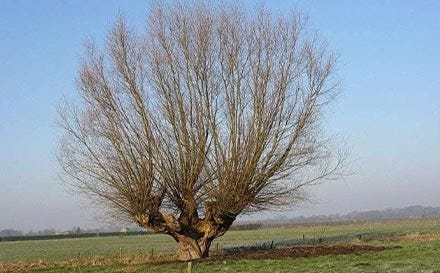
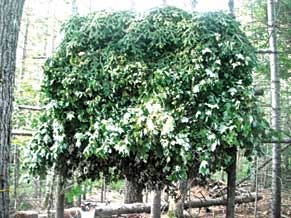
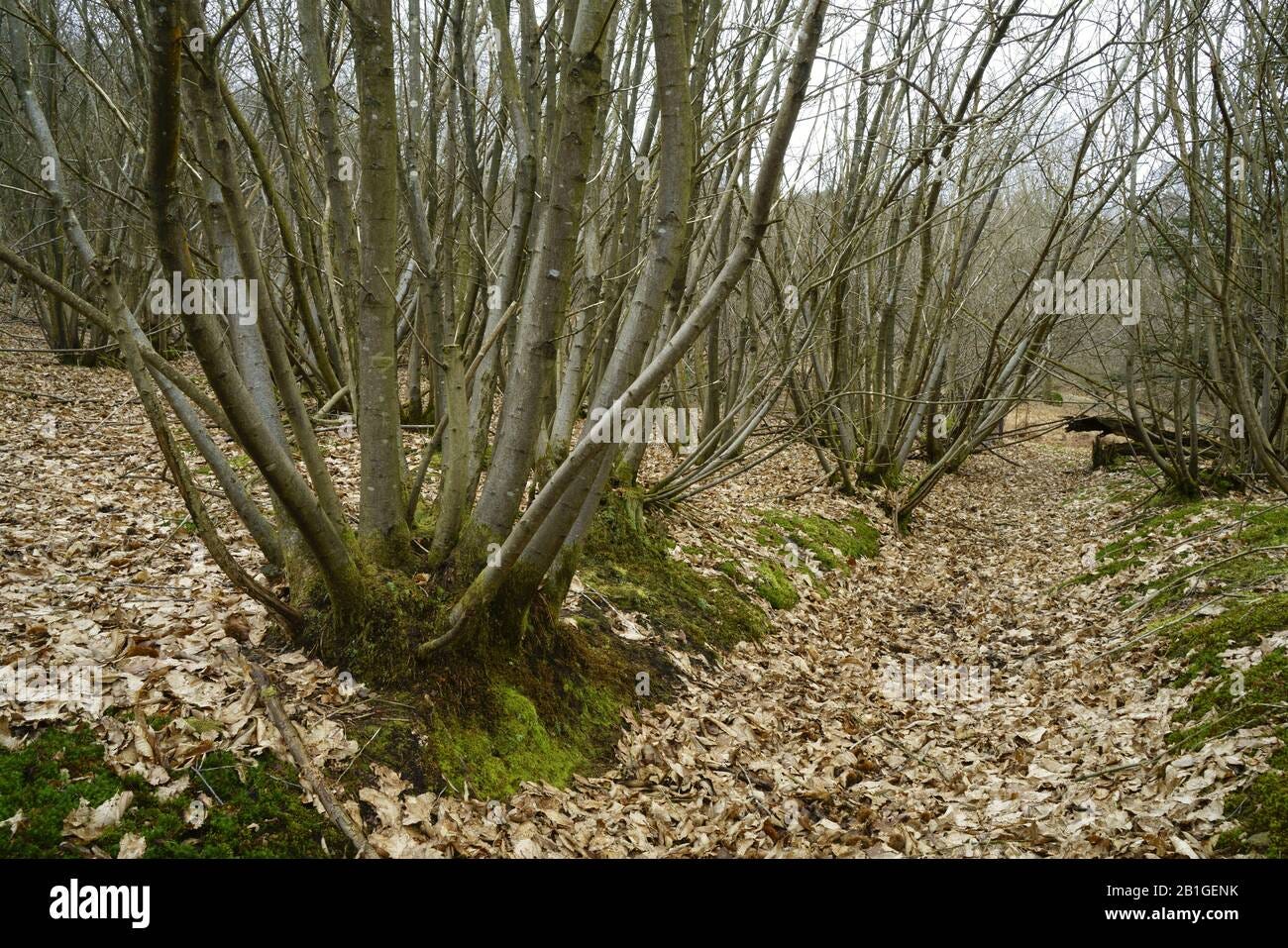
Ever since your piece on how to read landscapes, I've been seeing coppiced trees everywhere. It's great to learn more and realise that this is something that is done on purpose!
Learnt some good new things from this, thanks Andy. I’ve been pollarding really large non-native trees on my farm, and it’s amazing how they reshoot so well. I’ve been using them as supports (and shading) for my vanilla bean vines and black pepper vines. We also do coppicing to the nitrogen fixing trees I grew alongside my main fruit trees in a syntropic sort of fashion. I now feel a bit more connected to my ancient ancestors. Thank you.